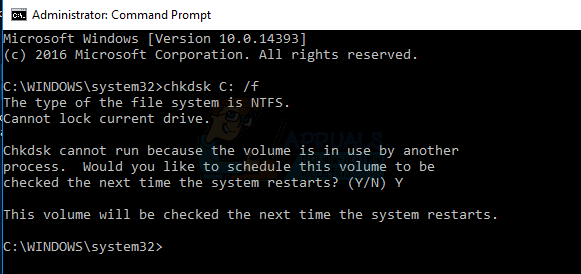‘Event 1001-0x8e kernel_mode_exception_not_handled’ [Solved]
Event 1001: The computer has rebooted from a bugcheck is commonly associated with another message, namely the 0x8E error, KERNEL_MODE_EXCEPTION_NOT_HANDLED. This issue usually means that there’s a problem with a driver, or there’s a need for a BIOS upgrade.
This issue can happen at any time, and occurs even on a brand new system, which is frustrating for a lot of users. If you’re one of the affected ones, read along to see two things you can do to solve this issue and get your computer back in complete working order.
Method 1: Run CHKDSK
CHKDSK is Microsoft’s built-in utility for checking your disk for errors and corruptions, and there are also certain parameters that will help it fix found errors.
- Press the Windows key on your keyboard, and type Right-click the result and select Run as administrator.
- In the Command Prompt, type the following command: chkdsk C: /f
Note that you should replace C: with the letter of the drive or partition where Windows is installed. The /f parameter will tell CHKDSK to attempt to fix any errors it finds on your drive.
- Wait for the scan to complete, and your issue should be resolved and your PC will be much more stable, as CHKDSK will also fix any other potential errors.
- Reboot PC for the CHKDSK scan to begin.

Method 2: Update your drivers
You can always do this via Windows Update, or by right-clicking each driver and updating it from the context menu, but it is a fact that Microsoft doesn’t always give the best drivers for some devices. To solve this, you can manually update all drivers that need an update via their manufacturer’s website.
- Press simultaneously the Windows and R buttons on your keyboard to bring up the Run
- Type devmgmt.msc and either press Enter on your keyboard or click OK in the window.
- Expand the devices in the Device Manager.
The following steps, from the point you have a complete overview of all your devices and drivers, should be repeated for all devices in the list.
- Right-click the device, and select Properties from the menu.
- From the Driver tab, see the version of the driver currently installed.
- Use the device’s name to do an online search and find the latest available drivers for your operating system from the manufacturer’s website.
- Compare the versions and see if there’s a newer driver available. If there is, download and install it.
This error can be very disturbing for some users, as it reboots your PC often and you won’t be able to use it until you fix it, at least not without the fear of it rebooting and you losing all your work. However, there are two fairly easy steps that can help you fix it, so follow them if you would like to get rid of the problem.